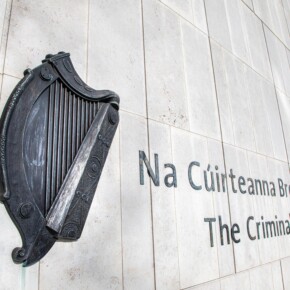“No urgency” from An Bord Pleanála on flood protection says Councillor
Mike Finnerty 27 Sep 2023
Dublin City Council have published a report into the flooding that hit Clontarf in August.
Storm Antoni, which made landfall on August 5th, saw around 25 days worth of rainfall fall within nine hours, and forced the evacuation of dozens of homes in the area.
The area, which also saw extensive flooding in August 2008 and October 2011, saw the nearby River Wad overspill following heavy rainfall.
Following those flooding events, Dublin City Council erected a flood retention pond within the gold course at Clontarf, with a capacity of holding 35 million litres of rainwater during a storm.
In a report into the recent flood, Dublin City Council noted that an upgrade to the flood retention pond on Clontarf golf course, which would have diverted water from the River Wad to the sea at Clontarf, was delayed for over a year.
The application called for a new 30 m length of 1,500 mm diameter surface water culvert at Howth Road, and a new 45 m length of 1,500 mm box surface water culvert outlet at the sea front at Clontarf.
Dublin City Council submitted a planning application to An Bord Pleanála in July 2022 and were asked to give additional information for the request in November 2022.
Planning permission for the upgrade was only granted in the first week of September 2023.
The report broke down the chain of events that led to the flooding on August 5th, and the findings painted a sequence of events that was akin to a set of dominos falling.
The main cause of the flooding was due to the flood retention pond within Clontarf golf course overtopping, spilling onto the course and flowing over land to the boundary between the golf course and the railway line.
Following that, the floodwater then entered the culvert under the nearby railway line and flowed adjacent to the railway line, surcharging at the existing 600mm sewer, with the water levels rising to the level of the railway track.
The waters then flowed along the railway line over ground and entered the Auburn Apartment building filling the basement and then flowing out the entrance and down the road, ultimately flooding in Castle Court.
Examining what the next steps were, Dublin City Council said they were weighing up both interim and permanent measures, which can be implemented to mitigate against future flooding events.
The Council say they have “already engaged” with Clontarf golf course with a view to retaining additional storm waters within the golf course and eliminating flows via the culvert under the railway or onto the railway line.
The planned upgrade works are being “fast-tracked,” with a view to completing the works by September 2024.
The Office of Public Works confirmed their support for these extra flood alleviation measures, according to the report.
Local resident Marie Casey told RTÉ News in the aftermath of the flood that “you could start seeing this water was like flooding over in, like a waterfall from the next-door wall.”
“We found out that the water had actually filled the basement down below the apartment buildings near us and was rising and coming out onto the road as well,” she recalled.
“It was getting higher and higher and higher and then starting to kind of spread down the road down further.
Green Party councillor Donna Cooney told Northside People that the delay on An Bord Pleanála’s end was concerning.
Cooney told the Irish Times in October 2021 that there was “no urgency” from An Bord Pleanála on the issue and that extreme weather events would occur more frequently as a result of climate change.
When asked if she was proven right, she said “unfortunately, yes.”
“Decision-making on these issues needs to be quicker, and it needs to be brought back down to the local level,” she said, remarking that the delays were “ridiculous.”
Cooney said she and her fellow Northside elected representatives were helping residents come to terms with the flooding, and said there was a collective devastation in the area.
“With a flood like this, it’s not just a matter of drying things up,” she noted.
She said that the Council has engaged with affected residents to provide advice to make their homes more floodproof, but Cooney pointed out that extreme weather events are becoming more frequent.
“It is crucial that we have the infrastructure in place to deal with this issue,” she said, noting that local businesses are also anxious about the threat of flooding.
“There is always the possibility of a perfect storm rolling in, a storm front with high winds and strong rain, and it is crucial that our local homes and businesses are adequately prepared for it because of our location,” she said.
Reverting planning decisions back to local councils would expedite the process, she said, and would be “more democratic.”
“The ball is in An Bord Pleanála’s court now with how they want to deal with this, they are well within their rights to go to Government and ask for extra resources, staffing, or money, but the crucial thing is that they flag they don’t have the capabilities to deal with the planning process as is.”











